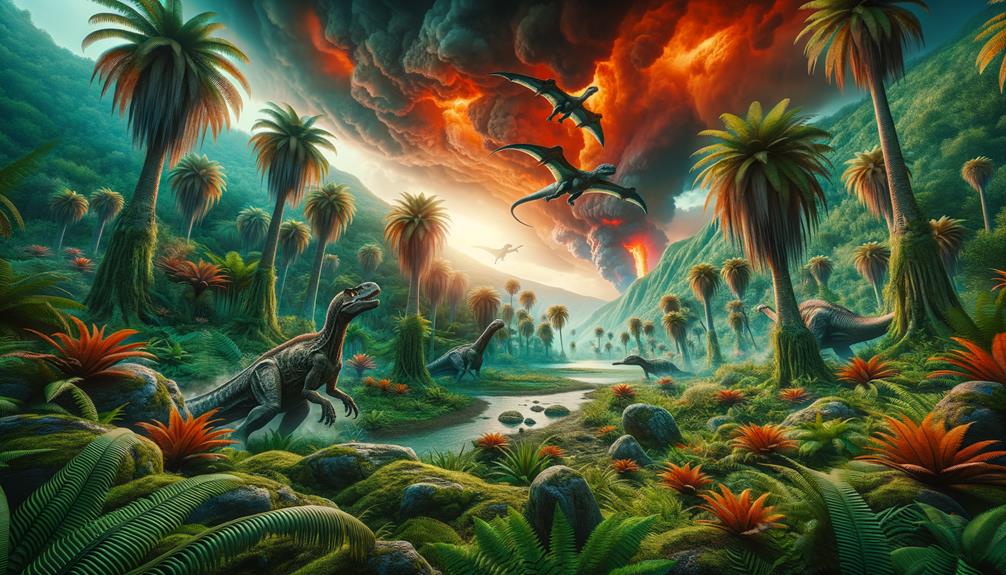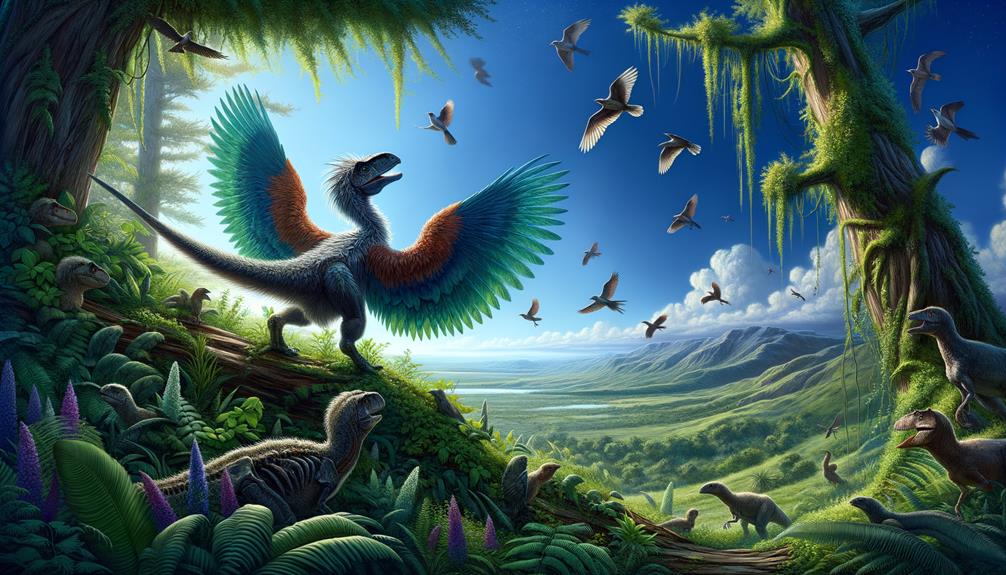I'm fascinated by the intriguing story of turtle shell evolution, a topic rich in scientific discovery and debate. The 220-million-year-old Odontochelys fossil from China shows an early turtle with a fully formed plastron but a partial carapace, illustrating a gradual evolutionary process. This discovery challenges older theories that turtles suddenly appeared with complete shells. Fossil evidence and anatomical adaptations suggest that shells evolved internally, a concept supported by modern embryonic development. Recent finds and innovative research methods, such as CT scans and biomechanical models, are helping to uncover the mysteries of turtle shell evolution. As we explore this topic further, we'll unravel even more about this remarkable evolutionary process.
Key Takeaways
Fossil discoveries, such as Odontochelys, suggest that turtles developed their plastron before their carapace, indicating a gradual evolution of the turtle shell.
Recent finds have challenged the long-held theory that turtle shells originated from external plates, instead pointing to an internal skeletal origin.
Turtles' evolutionary relationships with birds and crocodiles have been revised thanks to phylogenetic analyses.
The discovery of fossils like Chinlechelys tenertesta has sparked debate about the gradual development of turtle shells.
Advanced techniques, including CT scans and genetic analyses, are crucial in uncovering the mysteries of turtle shell evolution.
Early Turtle Fossils
The discovery of 220-million-year-old Odontochelys fossils in China has provided significant insights into the gradual evolution of the turtle shell. These ancient fossils have upended our understanding of the origin of the turtle shell, suggesting that it developed from bony growths on the spine and ribs rather than from bony plates in the skin.
The fully formed plastron in Odontochelys is particularly intriguing, indicating that this ancient turtle species likely inhabited aquatic environments and needed protection from below. This adaptation offers a glimpse into the survival strategies employed by early turtles. The absence of a fully formed carapace provides compelling evidence of the gradual evolution of the turtle shell over millions of years.
The examination of these fossils has filled a critical gap in our understanding of how turtles transitioned from being shell-less creatures to ones with the complete protective armor we see today. The Odontochelys fossil serves as a remarkable link in the evolutionary timeline of turtle shell development, providing a clearer picture of the origin of the turtle.
Primitive Shell Adaptations
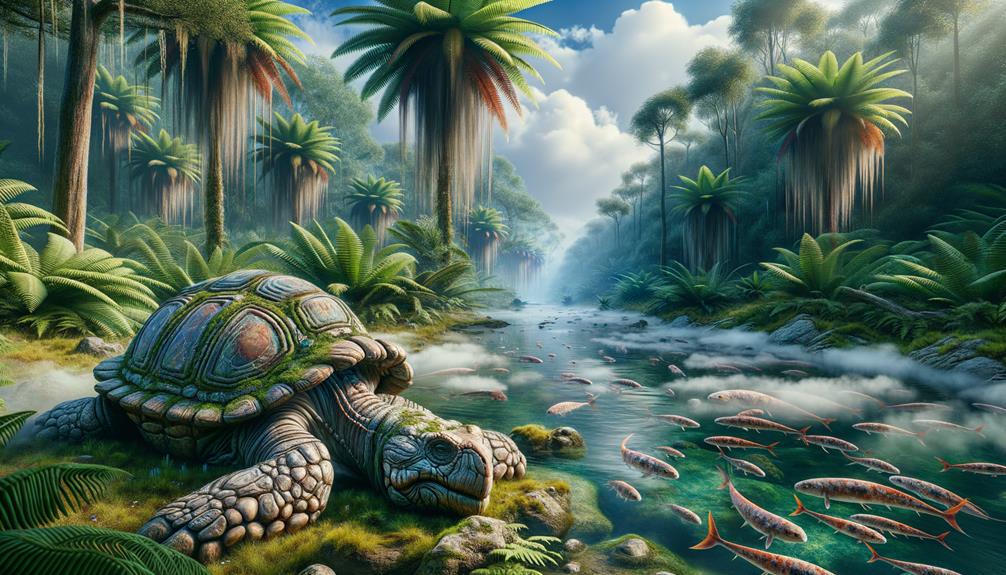
Building on our insights from early turtle fossils, we can see how primitive shell adaptations like those in Odontochelys reveal the intricate evolutionary steps that led to the modern turtle's protective armor. This ancient reptile, which lived around 220 million years ago, had a fully formed plastron but only a partial carapace, suggesting that the shell evolved from the bottom up.
Odontochelys, found in China, provides a critical glimpse into the intermediary forms that bridge early reptiles and modern turtles. One striking feature of Odontochelys is its possession of teeth, unlike today's turtles which have beaks. This points to its status as an evolutionary intermediate.
The partial carapace lacked the bony armor plates known as osteoderms, challenging earlier theories that the shell evolved from skin bones. Instead, the evidence indicates that the shell's evolution had a more internal origin.
Studies of modern turtle embryos support this, showing that the shell forms from the ribs and vertebrae, emphasizing the internal basis of shell development. As a result, Odontochelys stands as a pivotal 'missing link,' illuminating the gradual adaptation process that shaped the unique structure of the turtle shell we see today.
Anatomical Changes Over Time
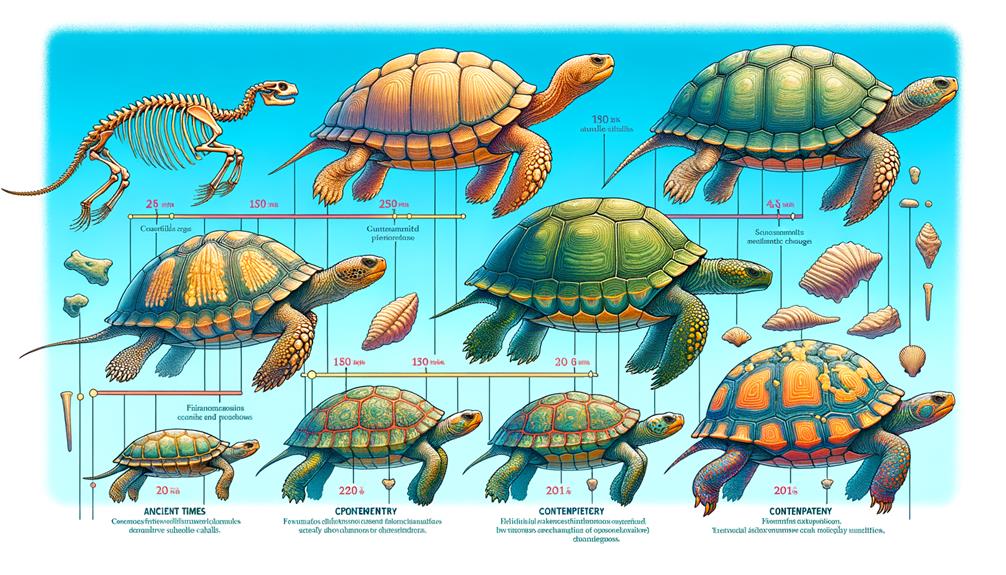
As we delve into the history of turtle evolution, it's striking to see how their shells transformed from basic bony growths on their ribs and spine into the robust, protective armor we know today. This gradual process showcases nature's remarkable adaptability.
Early turtles sported bony protrusions along their ribs and spines, which eventually merged to form the initial stages of a shell. Fossil discoveries reveal that the plastron, the belly part of the shell, developed first. This adaptation provided vital protection from predators below. Over time, the carapace, or upper shell, evolved, completing the turtle's defensive armor.
The unique fusion of ribs and vertebrae into a solid shell is unparalleled among vertebrates. This adaptation allowed turtles to retract their heads and limbs, offering a significant survival advantage. The turtle shell's evolution wasn't just about defense; it was about creating a protective fortress, allowing these ancient creatures to thrive.
The fossil record clearly illustrates how turtle shells gradually achieved their iconic form. This intricate process demonstrates how each anatomical change enhanced the turtle's survival prospects, ultimately giving rise to the resilient creatures we know today.
Recent Paleontological Discoveries
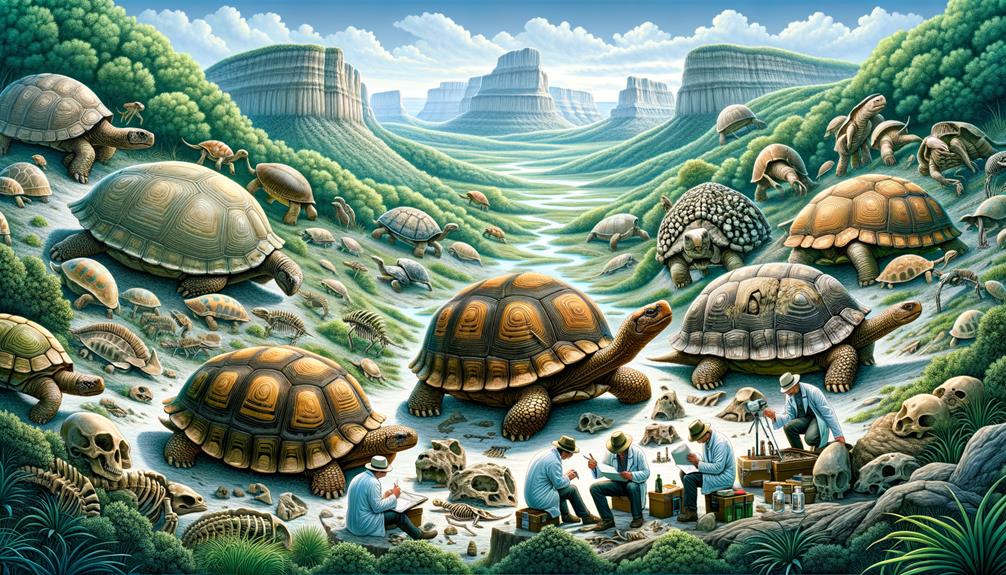
While exploring the intricate history of turtle shell evolution, recent paleontological discoveries have started to uncover the ancient roots and gradual development of these remarkable structures. One of the most significant finds is the 220-million-year-old Odontochelys unearthed in China. This fossil, studied by the Chinese Academy of Sciences, provides direct evidence of the evolutionary history of turtle shells, bridging a crucial gap in our understanding.
Odontochelys boasts a fully developed plastron but lacks a complete carapace, challenging the long-held assumption that turtles emerged fully formed with their iconic shells. These findings suggest a step-by-step process, offering fresh insights into the anatomical changes that facilitated their unique adaptations.
- Odontochelys: A 220-million-year-old fossil with a plastron but no full carapace.
- Direct evidence: Challenges previous notions of turtles' sudden appearance with fully formed shells.
- Chinese Academy of Sciences: Leading research on these pivotal fossils.
This ancient relic has opened up new avenues for understanding how turtles migrated into their shell-encased bodies. As each new fossil discovery is made, it adds another piece to the puzzle, helping us trace the fascinating and intricate evolutionary path of these enduring creatures.
Evolutionary Theories Challenged
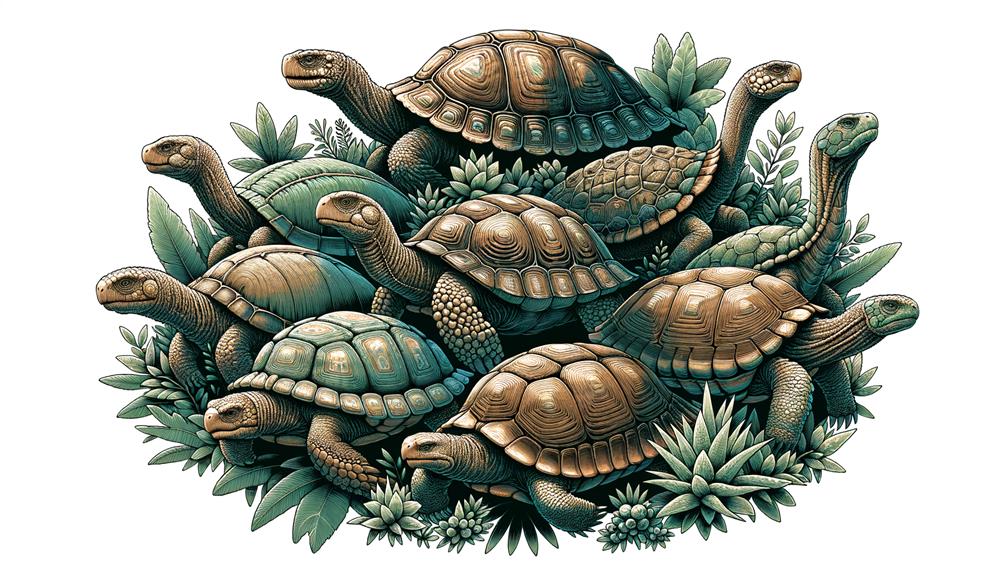
Recent fossil discoveries and advanced genomic analyses have challenged long-standing theories about turtle shell evolution, forcing scientists to re-examine their traditional views. Historically, the prevailing opinion was that turtle shells evolved from a combination of internal and external skeletal structures. However, new fossil evidence, particularly from ancient species like Odontochelys, suggests that the turtle shell originates solely from the internal skeleton, debunking the idea that it comes from external plates.
Phylogenetic analysis based on genomic data has also upended the long-held belief that turtles evolved from primitive reptiles. Instead, these analyses suggest that turtles are more closely related to birds and crocodiles. The discovery of the 215-million-year-old Chinlechelys tenertesta fossil has added fuel to the debate, with some scientists arguing that it represents a true turtle ancestor, while others believe it's simply a reptile with armor plating.
These findings highlight the challenges of interpreting limited fossil evidence. They also reveal the scientific community's reluctance to consider alternative explanations that stray from the traditional Darwinian evolutionary framework. As we continue to uncover more evidence, the mysteries of turtle shell evolution continue to unfold, inviting us to question and explore beyond established boundaries.
Future Research Directions
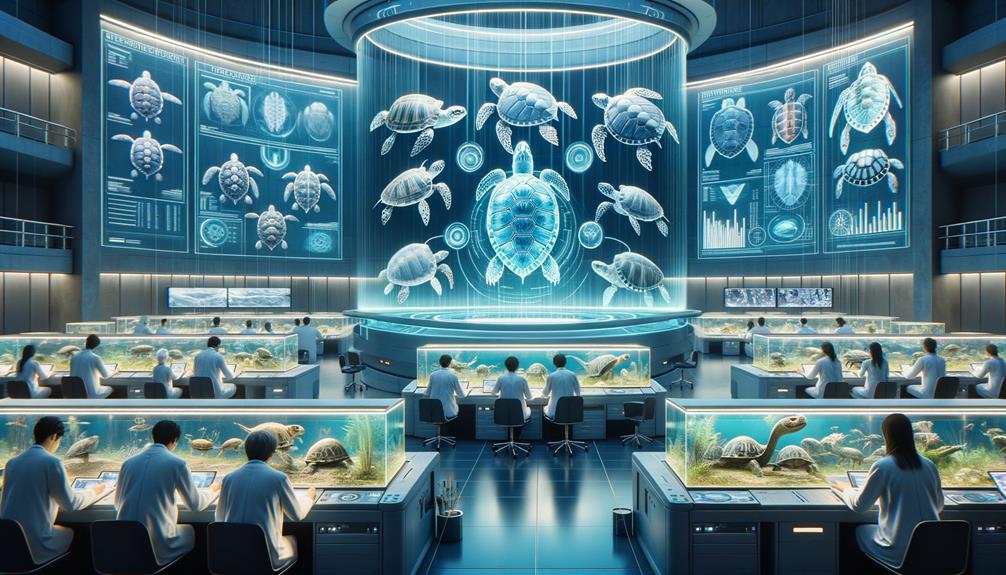
Given the controversies and new insights sparked by recent discoveries, the next steps in turtle shell evolution research must harness advanced technologies and interdisciplinary approaches to unravel these enduring mysteries. Computer tomography (CT) scans and 3D modeling will play a crucial role in examining the internal anatomy of ancient turtle fossils, allowing us to visualize the step-by-step changes in shell structure and gain insight into the evolutionary past.
By comparing modern turtle shell development to the fossil record, we can connect the links between extinct and extant species, illuminating the series of evolutionary changes that led to the diverse forms we observe today. Genetic analyses will also provide critical insights into the genetic underpinnings of unique turtle features, helping to trace their evolutionary relationships across reptilian lineages.
Ongoing fieldwork and fossil collection are vital to finding more intermediate fossils that fill the gaps in our understanding. Integrating computer simulations and biomechanical models will enable us to test hypotheses on how the turtle shell functioned and provided evolutionary advantages.
- CT scans and 3D modeling: Understanding internal anatomy.
- Genomic analyses and fossil record comparison: Tracing evolutionary relationships.
- Biomechanical models: Testing functional hypotheses.
These methodologies promise to deepen our understanding of turtle shell evolution, pushing the boundaries of what is known.
Frequently Asked Questions
What Is the Evolutionary History of the Turtle Shell?
Did you know turtles have been around for over 220 million years? It's amazing how their shell developed step by step from the ribcage and spine, with the plastron forming first, likely for protection in aquatic environments.
How Do You Think Chelonians Evolved to Have Shells?
I believe chelonians developed shells through a gradual process of rib and vertebrae expansion, which eventually led to fusion over time. Fossils like Odontochelys provide a fascinating glimpse into this evolutionary journey, showcasing how simple reptiles transformed into armored survivors.
When Did Turtle Shell Become Illegal?
When I visited the market in 2019, I came across confiscated turtle shells that had been seized from a poacher. The international trade of turtle shells was banned and strict wildlife protection laws were put in place, particularly after the 1975 CITES agreement.
How Did the Turtle Get Its Shell Myth?
I've always been intrigued by the myth that a turtle got its shell as a gift from the gods for its bravery. This captivating story highlights humanity's enduring desire to explain nature's wonders through creative storytelling.


